There is up to a 40% chance that at some point in your life, you’ll be unfortunate enough to feel some form of pain which originates in your back but radiates down your leg. This is even more likely if you spend much of your working life in an awkward or seated position - I’m talking to you: cab drivers, machinery workers, warehouse workers, and desk workers with sub-optimal desk set-up.
If you want to know more about the condition and how exercise can help ease the pain associated with sciatica, then read on.
By the way…last week’s newsletter on the hip flexors was popular wasn’t it?! Over 700 likes already, yikes. If you haven’t read it yet, I’ve embedded the link below, so just give it a click or tap.

Housekeeping
Here are a few quick reminders before we begin:
You can access my entire archive of Muscle Monday and Workout Wednesday here.
You can download my FREE guide, 20 Habits to Change Your Life, here, and explore my other socials here.
You can get 10% off EVERY order, present and future, at Awesome Supplements by using the code ‘EZEP’ at checkout. The electrolyte powder, Hydrate, is a smart idea for those exercising in the Summer months.
Paid subscribers get full access to exclusive newsletters. I’m offering 10% off annual plans until June 1st 2025, so hit the button below to redeem this offer.
What is sciatica?
Before we look at how to combat the pain associated with sciatica, let’s first explore what it actually is:
Sciatica is often characterised by pain, weakness, numbness, tingling, or other parasthesia in the lower back, bottom, or leg. It can often just affect one side, but it can affect both legs at the same time.
Sciatica itself is not a condition, but a symptom with several possible root causes. As the name suggests, this pain is generally a result of some form of issue affecting the sciatic nerve. This nerve is the biggest and fattest (up to 2cm in diameter) in the human body. It runs from nerve roots which originate in the lumbar and sacral vertebrae (L4-S3), and it runs down the leg via the glutes, hamstrings and calves. It even directly innervates some of the muscles in the feet. The image below demonstrates this nicely.
Whilst the nerve does originate from the lower back, many people mistakenly (self-)misdiagnose their lower back pain as sciatica. In reality, for most who suffer from the condition, the pain which radiates down the leg is far worse than any pain in the back region. Only ~5% of those with lower back pain are actually feeling the pain we know as sciatica.
Remember, nerves are essentially the electrical highways in our body. They allow signals from the brain to reach our muscles, and vice versa. Without nerves, we can’t move, because the signals cannot tell our muscles how to act. We also cannot feel. They are vital, which is why, when something irritates a nerve, movement and sensation issues are two common symptoms.
What causes sciatica?
As we now know, sciatica is caused by a form of irritation to the sciatic nerve. However, this can occur from a variety of sources, including, but not limited to:
Herniated intervertebral discs
Often erroneously referred to as ‘slipped discs’, which is now an outdated description. The discs between vertebrae are much more akin to a doughnut and likely to ‘bulge’ or ‘herniate’ rather than ‘slip’. If a disc bulges or herniates, it is possible that it may exert pressure on the sciatic nerve, leading to sciatica.
If you think you may have a lumbar (lower back) disc herniation, a practitioner will likely perform a straight leg raise test. If pain occurs at between 30 and 70 degrees (see the image below), then this may be a sign of nerve compression due to lumbar disc herniation. Although please note, I am not advising you to try this at home and self-diagnose! This is purely for informative purposes.
Spondylolisthesis
This condition occurs when the bone of the vertebra, rather than the disc between the vertebrae, becomes displaced forward. Just like with a disc herniation, this is more likely in the lumbar spine (lower back) and can therefore put pressure on the sciatic nerve, leading to sciatica.
Spinal stenosis
Individuals who suffer from spinal stenosis have a much narrower than normal ‘tunnel’ in their spine, which houses the spinal cord and nerves. This can happen as we get older, and the nerves can adapt to some extent to this change. Again, the narrow housing can lead to increased pressure on the sciatic nerve, leading to symptoms we would associate with sciatica.
Piriformis syndrome
Clinicians seem to be in debate as to whether this itself is a valid diagnosis, but I have included it on the assumption that some of you will be aware of it, or have been diagnosed. To understand this logic, you may need to familiarise yourself with the muscles of the glutes.
The sciatic nerve can run adjacent to a muscle in the bottom called the piriformis. This muscle can become inflamed due to injury, sedentary behaviour, or even if it becomes enlarged due to exercise-induced hypertrophy. Once inflamed, it can compress the nearby sciatic nerve, exhibiting the shooting pains down the leg we are now all-too-familiar with.
Whilst these are the most common causes of sciatic pain, other, less frequent causes include: malignancy/tumours, epidural abscesses, and epidural haematoma. It is always best to seek a diagnosis and further tests if you think you have sciatica, to establish the root cause.
The Role of Exercise in Treatment
Exercise can play a role in the recovery from sciatic pain. However, the suitability of the exercises may depend on the cause of your sciatic pain. The important thing here is to listen to your body. If you’re not sure that you’re performing the exercise correctly, or if performing an exercise makes any symptoms worse, then stop. The following exercises are examples of stretches and low-intensity exercises which can help to stretch the muscles around the hips and glutes, easing symptoms of sciatica.
One more thing. Keeping active when possible is important in managing pain and general well-being. Low intensity, low impact exercise such as walking, swimming, and cycling may all help in the recovery process.
Foot elevation
Lying on your back with your feet elevated is proven to be a position which puts the lumbar spine under the least pressure. Keeping this position for up to 10-15 minutes at a time can help to relieve the symptoms of sciatica.
Figure-4 Glute stretch
Holding this position for up to 60 seconds, three times per leg, can help stretch the glute muscles and relieve pain.
Cat cow
The cat-cow or cat-camel is a great way to stretch the lower back. Perform very slowly, holding for 10s in one position, before gently stretching into the other position. Repeat up to 10 times, for 3 sets total.
Glute Bridge
The glute bridge is a simple exercise. Simply lie on the floor, bring your feet towards your bottom until the knees are at 90 degrees, then gently lift your hips and bottom off the floor and squeeze the glutes. Hold for 3-5s then return to the floor. Repeat 10-15 times, up to 3 times in total.
Childs pose
Another good stretch for the lower back. Start kneeling with your knees about hip width apart, then sit back onto your heels. You may feel a stretch in your thigh in this position. From there, fold at the hips and reach forward with your hands and torso until you feel a good stretch. Hold for 30s-60s and repeat up to 3 times.
Knee Rolls
Finally, an exercise which allows for some very gentle rotation. Start in the glute bridge position, then roll both legs to one side, hold for a second, and roll to the other side. Repeat 10-20 times, up to 3 times in total.
Takeaways
If you are currently experiencing pain which resembles sciatica, do see a practitioner for a diagnosis and to establish the cause of irritation of the sciatic nerve.
Stay active where possible, and try some of these exercises, daily if you can, to help with the symptoms. Sciatica has a broad prognosis and can improve in weeks or months. There is a reluctance to move when sciatica hits, and a belief that rest will improve symptoms. This is simply not true. Exercise, when performed correctly, accelerates recovery and helps with mental health during the recovery period.
If you, or anyone you know, has previously or is currently suffering with sciatica, please do share this newsletter with them by hitting the button below. Thanks and see you next week!



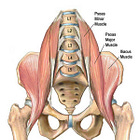


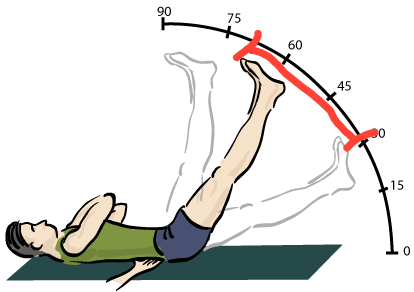

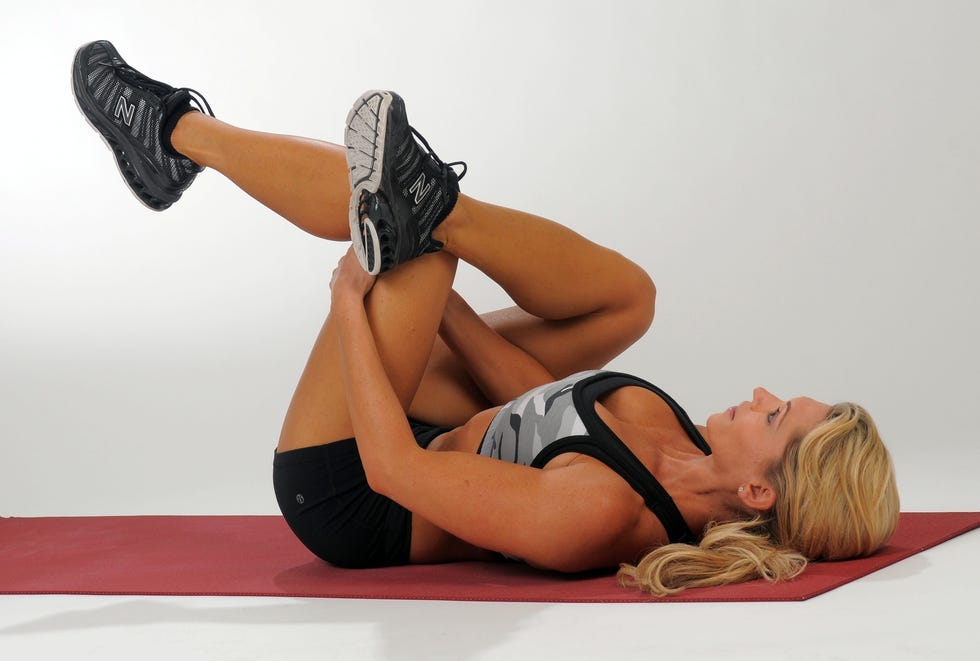
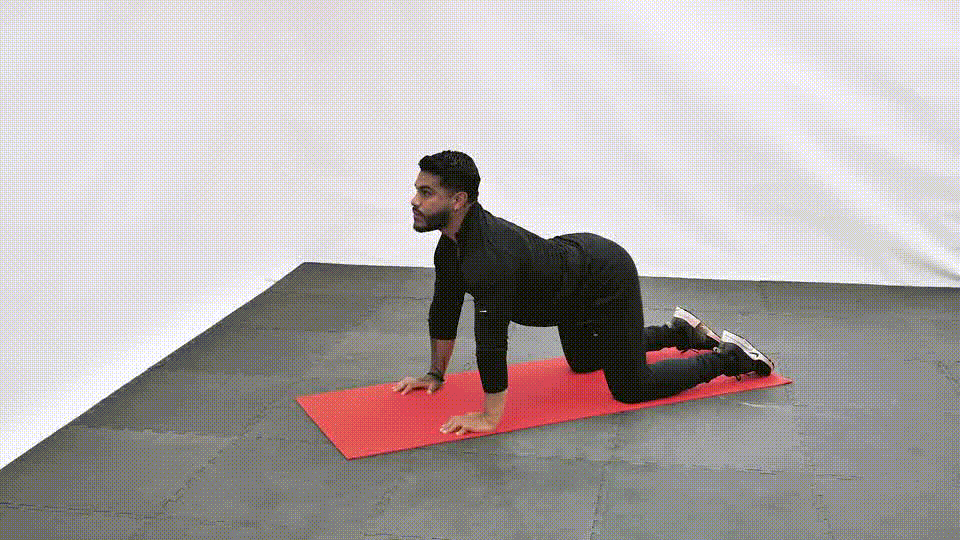
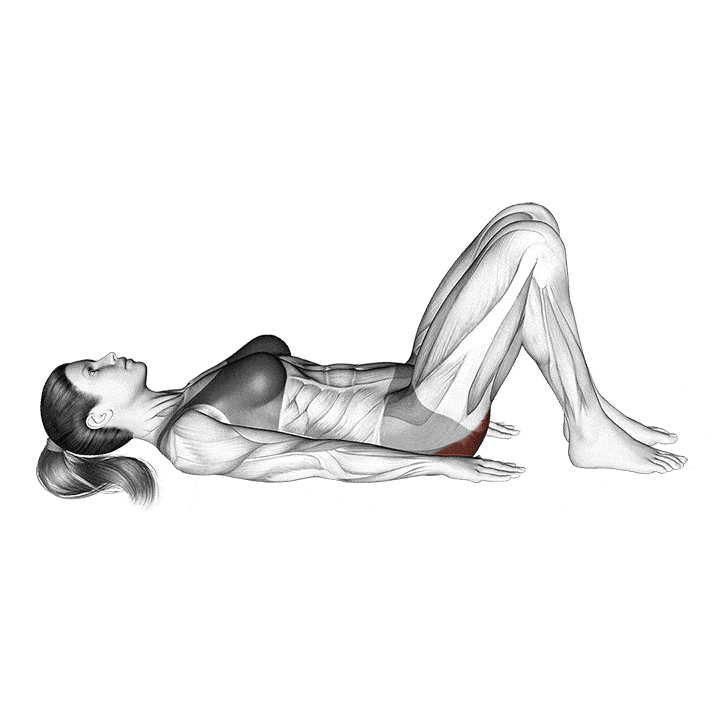

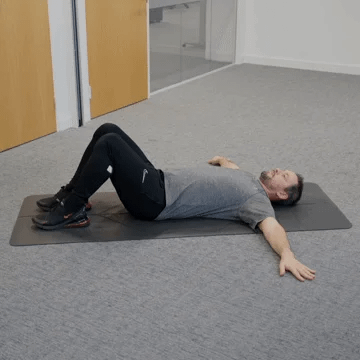
Great info with practical suggestions, thanks Ben!
Thanks for such an interesting article, really informative, I wish I had read it 6 months ago, when my Sciatica started! It did go, eventually,a few weeks ago, I think your exercises would have helped.